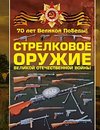
-
 Anglický jazyk
Anglický jazyk
Battles of the Crimean War
Autor: Source: Wikipedia
Source: Wikipedia. Pages: 27. Chapters: Battle of Alma, Battle of Inkerman, Battle of Malakoff, Battle of the Chernaya, Battle of Balaclava, Siege of Sevastopol, Siege of Taganrog, The Thin Red Line, Siege of Petropavlovsk, Siege of Kars, Bomarsund, Åland,... Viac o knihe
Na objednávku, dodanie 2-4 týždne
13.64 €
bežná cena: 15.50 €
O knihe
Source: Wikipedia. Pages: 27. Chapters: Battle of Alma, Battle of Inkerman, Battle of Malakoff, Battle of the Chernaya, Battle of Balaclava, Siege of Sevastopol, Siege of Taganrog, The Thin Red Line, Siege of Petropavlovsk, Siege of Kars, Bomarsund, Åland, Battle of Eupatoria, Siege of Silistra, Battle of Oltenitza, Battle of Kurekdere, Battle of Cetate, Battle of Kinburn, Skirmish at the Genitchi Strait, Battle of Suomenlinna. Excerpt: The Battle of Balaclava, fought on 25 October 1854 during the Crimean War, was part of the Anglo-French-Turkish campaign to capture the port and fortress of Sevastopol, Russia's principal naval base on the Black Sea. The engagement followed the earlier Allied victory in September at the Battle of the Alma, where the Russian General Menshikov had positioned his army in an attempt to stop the Allies progressing south towards their strategic goal. Alma was the first major encounter fought in the Crimea since the Allied landings at Kalamita Bay on 14 September, and was a clear battlefield success; but a tardy pursuit by the Allies failed to gain a decisive victory, allowing the Russians to regroup, recover, and prepare their defence. The Allies decided against an immediate assault on Sevastopol and instead prepared for a protracted siege. The British, under the command of Lord Raglan, and the French, under Canrobert, positioned their troops to the south of the port on the Chersonese peninsula: the French army occupied Kamiesh on the west coast whilst the British moved to the southern port of Balaclava. However, this position committed the British to the defence of the right flank of the Allied siege operations, for which Raglan had insufficient troops. Taking advantage of this exposure, the Russian General Liprandi, with some 25,000 men, prepared to attack the defences in and around Balaclava, hoping to disrupt the supply chain between the British base and their siege lines. The battle began with a Russian artillery and infantry attack on the Ottoman redoubts that formed Balaclava's first line of defence. The Ottoman forces initially resisted the Russian assaults, but lacking support they were eventually forced to retreat. When the redoubts fell, the Russian cavalry moved to engage the second defensive line held by the Ottoman and the Scottish 93rd Highland Regiment in what came to be known as the 'Thin Red Line'. This line held and repulsed the attack; as did General S
- Vydavateľstvo: Books LLC, Reference Series
- Rok vydania: 2011
- Formát: Paperback
- Rozmer: 246 x 189 mm
- Jazyk: Anglický jazyk
- ISBN: 9781156008508






 Ruský jazyk
Ruský jazyk 





